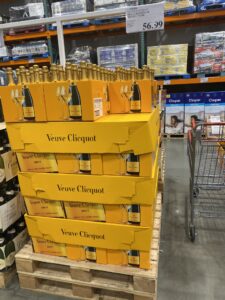When I read the news that prices on French Champagne could soon be soaring under President Trump’s tariff plan, my first response was to quickly get to my nearest Costco.

Veuve Clicquot champagne, still made much like it was when first developed over 200 years ago by the “Grande Dame” Madame Clicquot, is one of my favorites. Costco sells it for the best price around at $55 per bottle.
Thankfully, I got the last two bottles on Costco’s shelves. A friend who I texted about the tariffs and enjoys a glass of bubbles sent me this picture that there were plenty of bottles to go around at Visalia’s Costco.
Why Will We Be Paying More for Champagne?
It’s hard to keep track of President Trump’s tariff plans. One day they are on, and the next day they are suspended for 90 days. Consider this 90-day suspension as a good chance to stock up on your favorite French champagnes and European wines and spirits as their prices could soon be going up if President Trump’s tariff threat ultimately goes into effect.
In a Truth Social post, Trump called the European Union’s plans for a 50 percent tariff on American-made whiskey – issued in response to Trump’s reciprocal tariffs plan – “nasty” and said the U.S. would shortly thereafter impose a 200 percent tariff on European-made liquor.
Before issuing his threat, Trump would have been wise to read PRI’s latest issue brief on the impact on tariffs on the U.S. economy.
“Tariffs,” the study’s author Dr. Wayne Winegarden writes, “are nothing more than taxes on American consumers and businesses. They will raise prices on everyday goods, increase costs for manufacturers, and ultimately weaken the U.S. economy rather than strengthen it.”
Will There Be French Champagne on U.S. Store Shelves After Tariffs Go Into Effect?
The tariffs won’t wipe French champagne off U.S. store shelves completely, but it will cost more to buy and there will be a lot less available due to falling demand.
A New Jersey European wine seller told the Associated Press, “I don’t think customers are prepared to pay two to three times more for their favorite wine or Champagne.”
He’s right.
There will be a huge void for wine and champagne lovers. Roughly 17 percent of the wine sold in the U.S. comes from the European Union.
So, what’s a good alternative to Veuve that is both produced in the United States and is affordable?
What Are Some Affordable U.S. Alternatives to French Champagne?
While Champagne technically can’t be produced from grapes grown outside the Champagne region of France, there’s a lot of great sparkling wine made in California and other states. According to online reviews, many U.S. varieties are produced in a similar fashion and bear similarities to their French counterparts.
According to the tasting notes, the wine is “structured by Pinot Noir, the true backbone of the wine . . . (offering) flavors of pear, peach, and pastry enhanced by a touch of dried fruit from aging on lees, which gives it a true aromatic richness.”
There are more than a few California-produced alternatives that meet these qualities and are produced in a similar fashion, including:
- Roederer Estate Brut – Owned by the same family that produces the famous Louis Roederer Champagne in France, this version is produced in Anderson Valley in Mendocino County. One wine influencer calls Roederer the “Veuve Dupe.” One review notes the wine “offers up a fine nose of lemon, apple, bread dough, a touch of almond, dried flowers and a lovely base of soil.” At a very affordable $22.97 per bottle at Total Wine, it’s significantly more affordable than Veuve.
- Gloria Ferrer Blanc de Noirs NV – Produced in Sonoma County, Vine Pair notes that this California sparkling wine – made entirely from Pinot Noir – features “round, powerful fruit and toasty accents (that bear) remarkable similarities to Veuve Clicquot.” At just $13.97 per bottle at Total Wine, you could afford to have your favorite bubbles every day.
- Schramsberg Blanc de Noirs – According to the tasting notes, this wine is “made primarily from the red grape Pinot Noir . . . (and is) a complex, medium-bodied, brut sparkling wine . . . pioneered in the United States . . . in 1967,” mirroring the structure and red fruit notes of Veuve. Featuring “generous aromas of red apple, apricot, and candied lemon layered with fragrances of graham cracker and sourdough bread, at $40.99 per bottle at Total Wine, it’s an affordable splurge that is still cheaper than Veuve.
While tariffs are bad for many reasons – not the least of which is the impact it will have on my wine drinking habits – the bright side is we have an opportunity now to try some California-produced alternatives that may evoke memories of La Grande Dame’s triumph.
Tim Anaya is the Pacific Research Institute’s Vice President of Marketing and Communications and co-author of The California Left Coast Survivor’s Guide.

